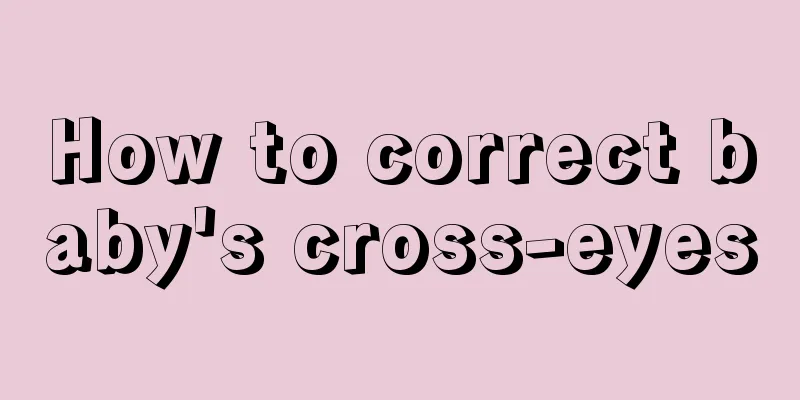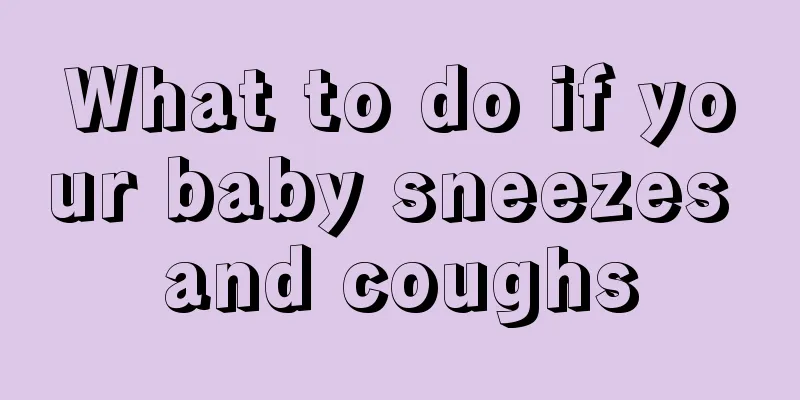How to correct baby's cross-eyes

|
Some parents will find that their babies have problems with their eyes, but because the problems are not that serious, they don’t take them seriously. However, this is a very bad behavior. If you find that your baby has cross-eyes, you must find a way to correct it, otherwise it will be difficult to correct it when they grow up. This will affect their vision, and severe patients may also affect the normal development of the eyes. Correction method: Most of the time, it is a normal physiological phenomenon for babies to cross their eyes. Only a very small number of babies have real cross-eyes. In the first few weeks of life, the eye movements of babies are unilaterally uncoordinated and the eyes may be biased. In addition, some children are born with a low nose bridge and wide eyes. There is a piece of epicanthus on the inner canthus of the eye on the side of the nose, which covers the bulbar conjunctiva on the side of the nose (commonly known as the white of the eye), making the black eyeball look as if it has moved to the middle, and people think that the child is cross-eyed. As the child grows, the bridge of the nose becomes higher and the epicanthus will gradually disappear. By 5 to 6 months, the binocular gaze function is fully developed, and by 6 to 7 months, the eye movement becomes bilateral and coordinated. If the eye deviates at this time, you should suspect the possibility of strabismus and go to the hospital for further examination. Cross-eye must be treated early, otherwise amblyopia is likely to occur, which will affect the child's stereoscopic vision. Children with cross-eyes only see things with one eye, so they have no sense of three-dimensionality and cannot distinguish the distance of objects. For example, when doing needlework, the thread cannot be threaded through the eye of the needle; when filling ink, the pen cannot be inserted into the ink bottle; small objects can never be reached, etc., which affects future work and study. If you suspect your baby is cross-eyed, you should pay attention to the following when seeking medical attention: 1. Before seeing a doctor: When it is discovered that the baby may have esotropia and needs medical treatment, it is recommended that parents help the baby prepare mentally before taking him to the doctor, and let the baby know that the doctor is friendly and will not let the baby get injections or take medicine. 2. On the day of consultation: The baby's health should be in good condition, and he should not be sick or in a bad mood. Please also reserve more time so that the baby has enough time to cooperate with the doctor. 3. During treatment: After confirming the diagnosis, parents should cooperate with the doctor's treatment with the right attitude. The younger the baby is, the more plastic his visual development is. The correction of strabismus, in addition to the requirements of eye position, is also related to the visual development of the left and right eyes and the more advanced binocular vision, that is, the establishment of three-dimensional perception. Don't ignore it because you think your baby is still young or that it only affects the appearance. |
<<: What to do if your child has corns
>>: How to correct cross-eyed children
Recommend
7 little secrets of the language sensitive period
Do you still remember the feeling when you first ...
What are some ways to improve children's memory?
A child’s memory is very important, because when ...
How to correct hunchback in children
It is common for children to have hunchbacks in d...
What causes rapid breathing in newborn babies?
Young parents who take more rest in daily life wi...
What are the benefits of children learning Latin dance?
Latin dance is one of the most popular types of d...
Treatment of torticollis in children
Torticollis in children takes a longer time to be...
What to do when boys are rebellious during puberty?
Adolescence is a period of time that everyone goe...
How to treat acute laryngitis in children
A sore throat is a precursor to a cold for adults...
What causes a baby's rapid breathing?
Rapid breathing in infants is a problem that many...
Can children with roseola be exposed to wind?
Roseola infantum is a condition that is more like...
Why do children's noses bleed easily?
Many parents find that their children's noses...
How to educate a 2-year-old baby_Education for a 2-and-a-half-year-old baby
Nowadays, parents have paid more and more attenti...
Causes of nosebleeds in four-year-old babies
Nosebleed is something that many friends will enc...
What is the reason for a 9-year-old child to have a fever?
Fever is one of the symptoms that each of us will...
What should I do if my child likes to get angry?
Educating children is a big issue, and there are ...









